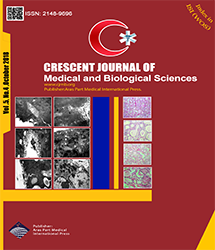
| Original Article | |
| Investigation of Autophagy-Related Gene Expressions in the Rat Model of Parkinson Disease | |
| Zohreh Golmohammadi1, Ali Noori-Zadeh2, Farzad Rajaei3, Leila Darabi3, Hatef Ghasemi Hamidabadi4, Hojjat-Allah Abbaszadeh5,6, Salar Bakhtiyar7, Mohammad Amin Abdollahifar8, Shahram Darabi3 | |
| 1Student Research Committee, Faculty of Medicine, Qazvin University of Medical Sciences, Qazvin, Iran 2Department of Clinical Biochemistry, Faculty of Paramedicine, Ilam University of Medical Sciences, Ilam, Iran 3Cellular and Molecular Research Center, Qazvin University of Medical Sciences, Qazvin, Iran 4Department of Anatomy and Cell Biology, Faculty of Medicine, Mazandaran University of Medical Sciences, Sari, Iran 5Hearing Disorders Research Center, Loghman Hakim Medical Center, Shahid Beheshti University of Medical Sciences, Tehran, Iran 6Department of Biology and Anatomical Sciences, School of Medicine, Shahid Beheshti University of Medical Sciences, Tehran, Iran 7Department of Clinical Biochemistry, Faculty of Medicine, Ilam University of Medical Sciences, Ilam, Iran 8Department of Anatomical Sciences and Biology, Medical School, Shahid Beheshti University of Medical Sciences, Tehran, Iran |
|
|
CJMB 2018; 5: 285-291 Viewed : 36732 times Downloaded : 6997 times. Keywords : 6-Hydroxydopamine, ATG 101, Autophagy, Oxidative stress, Parkinson disease |
|
| Full Text(PDF) | Related Articles | |
| Abstract | |
Objectives: Parkinson disease (PD) is characterized by protein aggregations in the cytoplasm of the dopaminergic neurons due to cellular stresses. In response to these stresses, autophagy is a conservative mechanism, and dysregulation of it results in protein aggregation. Despite the accepted prominent role of it in PD, autophagy associated-gene expression dysregulation involved in the autophagosome formation has remained largely unknown. In this study, the autophagy-related gene expressions in the rat model of PD were investigated. Materials and Methods:Male Wistar rats were divided into control, sham and PD experimental model groups. By injection of 6-hydroxydopamine (6-OHDA) into the striatum, the rat model of PD was induced. The apomorphine-induced rotation test was done 1 week before (baseline) and 4 weeks after surgery and also Nissl staining was performed for the brain sections. Then, rat substantia nigra pars compacta (SNpc) was extracted and RT-PCR was performed to detect the expression of FOXO3A gene and the autophagy-related genes (ATG). Furthermore, using Western blotting, we investigated the protein levels of ATG101. Results: Apomorphine-induced rotation test indicated significant contralateral rotations in the rat model group. Using RT-PCR, in the induction group, ATG101 was not expressed and ATG13, ATG14L, and VPS34 genes were downregulated in comparison with the control groups. Furthermore, Western blotting showed that ATG101 protein was not expressed in the model group. Conclusions: The results showed that deregulation of ATG101 expression, as a factor involved in the initial stages of the autophagy, occurs in the rat model of PD. |
Cite By, Google Scholar
Google Scholar
PubMed
Online Submission System
 CJMB ENDNOTE ® Style
CJMB ENDNOTE ® Style
 Tutorials
Tutorials
 Publication Charge
Medical and Biological Research Center
About Journal
Publication Charge
Medical and Biological Research Center
About Journal
Aras Part Medical International Press Editor-in-Chief
Arash Khaki
Deputy Editor
Zafer Akan


















